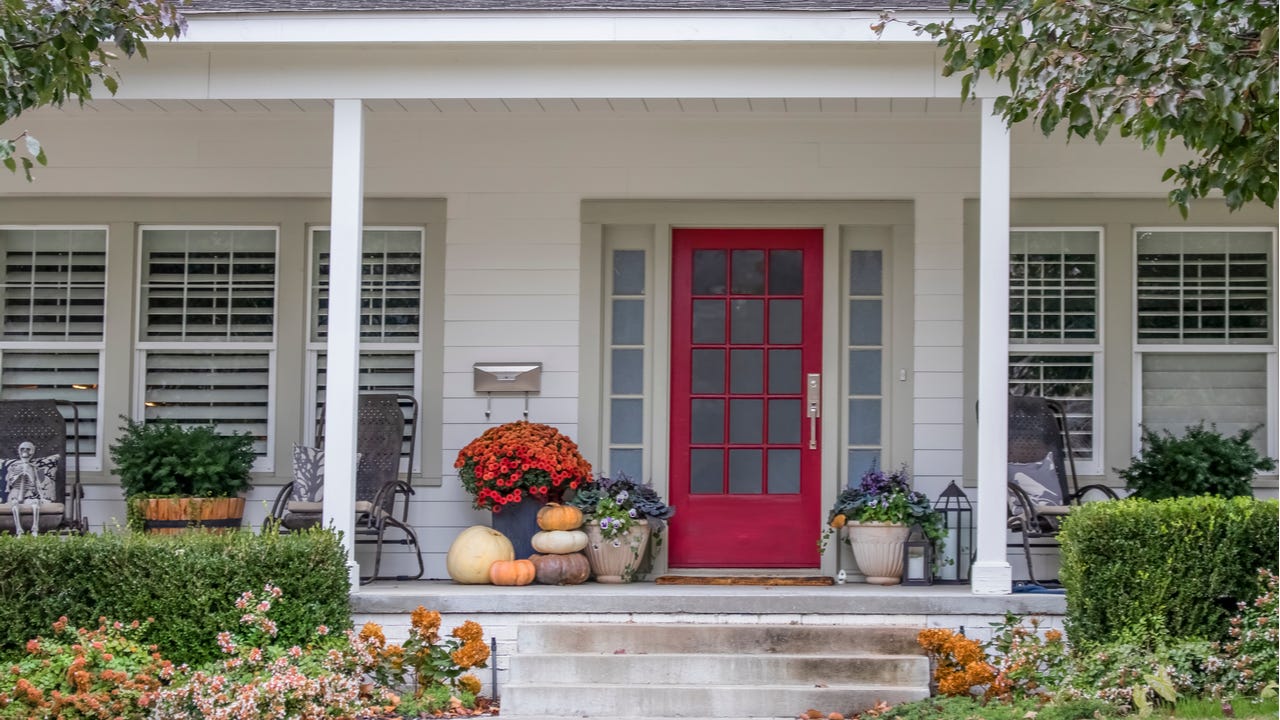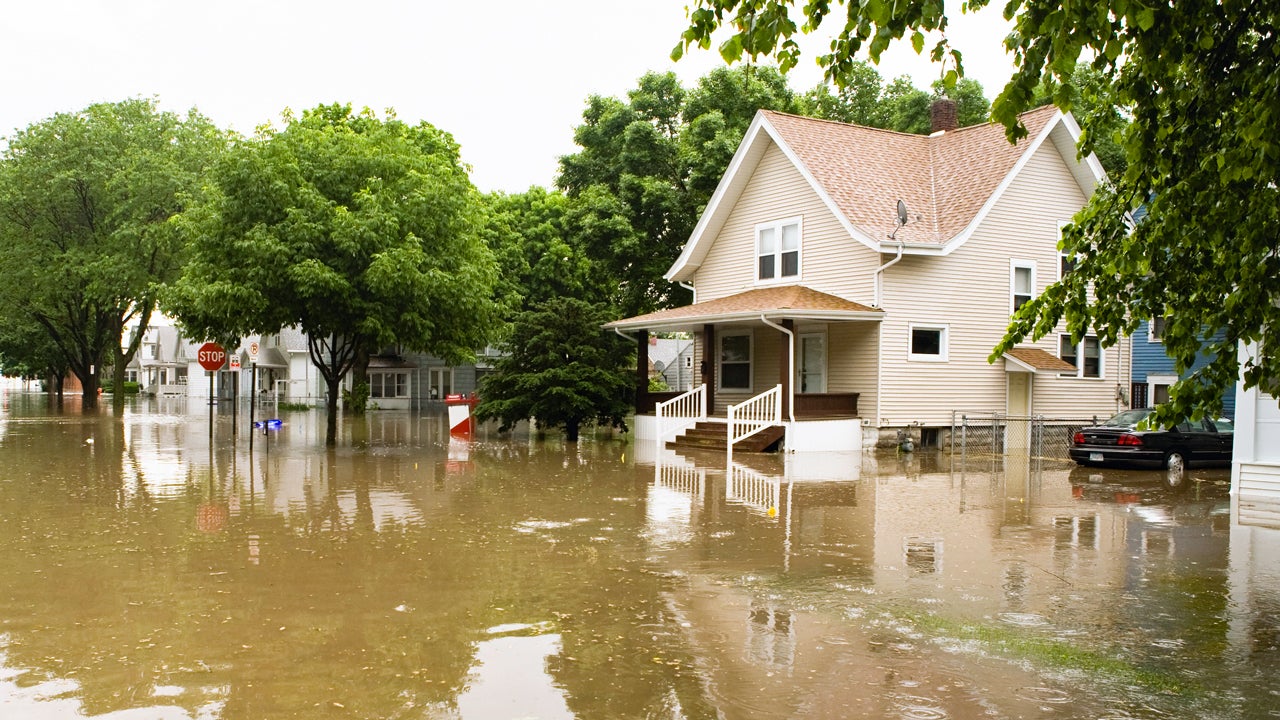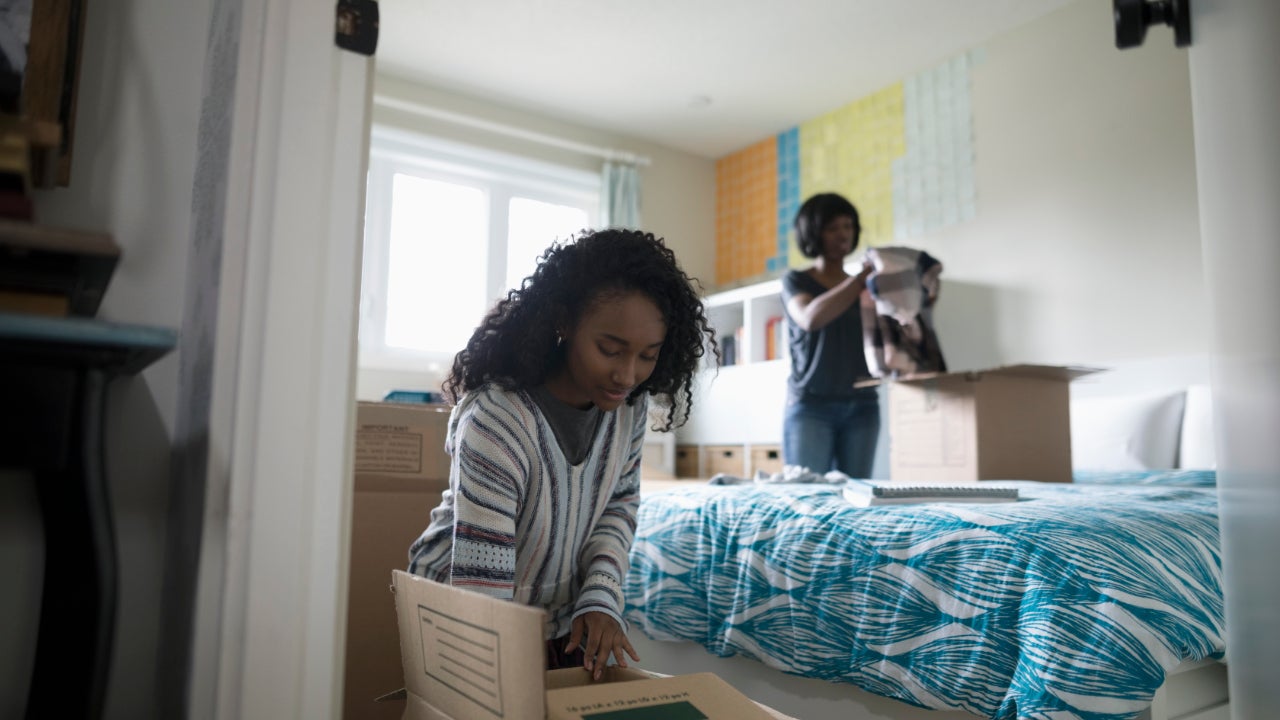Curb appeal tips: 8 ways to enhance your home’s exterior

Key takeaways
- Increasing a home’s curb appeal can garner more offers and potentially even a higher price for sellers.
- Some projects are pricey, but even inexpensive updates like fresh paint on the front door can make a difference.
- Don’t go overboard — focus on just the projects that will have the biggest impact. Your Realtor can help you decide.
From first dates to job interviews, first impressions matter. And when it comes to selling your home, that initial glimpse of its exterior is a big deal. So it’s important to put your home’s best face forward.
Curb appeal is the way your home looks from the outside — and more importantly, how attractive it is to anyone who passes by. The color and condition of the exterior, the landscaping and the overall maintenance of a property all contribute to its curb appeal.
This crucial first impression has a big impact when you list your home for sale. “Curb appeal is probably one of the most important and effective tools in selling a home,” says Yawar Charlie, a Los Angeles–based agent with luxury brokerage the Aaron Kirman Group.
8 expert curb appeal tips
Improving your home’s appeal can help you bring in the buyers and get top dollar for your sale — especially if you’re selling during the peak spring/summer season. Here are eight pro curb appeal tips to try:
1. Repaint the exterior
A dingy exterior can make your home unappealing to potential buyers before they even step inside. One of the best ways to refresh it is with a new coat of paint: “A full exterior paint job can go a long way, especially if the paint has faded or is chipping,” says Reese Stewart, a Realtor with IAD Florida in Orlando. “While this can be costly, it can make all the difference.”
Average cost: Between $10,300 and $16,750, according to Fixr, a home remodeling resource.
2. Repaint just the front door
Even freshening up just the entryway with new paint can have an impact. Zillow data indicates that black is the front-door color associated with the highest resale price: A classic black front door can increase offer prices by more than $6,000, its data shows. (The color to avoid? Gray.) “Painting just the front door or the garages can help spruce up the entry point, since it’s one of the first things potential buyers see,” says Stewart.
Average cost: Between $112 and $205, according to Fixr. But most homeowners could probably do it themselves for less.
3. Clean the windows
If a potential buyer is put off by dirty windows, they may not want to bother seeing what’s inside them, even if the interior of your home is lovely. “Giving windows a good scrubbing is an easy and inexpensive way to give your home that sparkling look,” says Stewart.
Average cost: Between $190 and $460 for professional window washers, per Fixr. But if you DIY, this project will cost you nothing but cleaning supplies and a little elbow grease.
4. Refresh the landscaping
Full professional landscaping can definitely improve the appeal of your home in a buyer’s eyes, but it isn’t cheap. Luckily, small and economical upgrades, like a few cheerful flower baskets to add color and pop to the entry area, can also help a lot. “Take a step back and see if you need to repot some flowers or replace some bushes,” says Stewart. “Even some new mulch can go a long way.”
Average cost: Between $8,000 and $15,000 for a from-scratch pro job, per Fixr. But if you have a rake and a lawn mower, you can spruce things up on your own for much, much less.
5. Power-wash the driveway
For many houses, the driveway is front-and-center. And years of leaves, rain, snow and salt can wreak havoc on its surface, especially if it’s concrete. Power- or pressure-washing can clear things up. “If your driveway is discolored, get it power-washed,” Charlie says. If there are a lot of unsightly bumps, gouges and cracks, you might even want to spring for having it resurfaced.
Average cost: Between $180 and $240 to hire pros, per Fixr. If you want to do it yourself, you should be able to rent a power-washer from your local home-improvement store for less.
6. Tidy up the lighting
Clean, functional and well-placed exterior lighting not only looks nice, but also can be an important safety and security feature. At the very least, inspect and refurbish the outdoor lighting you have. “Make sure that it is clear of cobwebs and dust and that the bulbs are still working,” Stewart says. “It can ensure your home is well-lit if any potential buyers visit around sunset or drive by at night.” If there are some too-dark areas, consider installing another fixture or two, or installing a motion sensor that turns on the light when someone approaches.
Average cost: Between $350 and $500 to install outdoor motion-sensor lights, according to Fixr.
7. Fix the roof and gutters
The look of your roof can be a sticking point for buyers — as can its condition, for obvious reasons. If there are broken roof shingles or other visible issues, or if your gutters are sagging or not properly secured, it’s best to take care of them with the help of a professional before the issue comes up during the home inspection.
Average cost: Between $400 and $2,000 for roof repair and between $218 and $396 for gutter repair, per Fixr.
8. Upgrade the mailbox
This one is small but significant. The mailbox is one of the first things a prospective buyer will see when they arrive at your home: “If your mailbox is faded or is looking worse for the wear, it’s time for an upgrade,” Stewart says. “It might be a small project, but it’s one that can help improve overall curb appeal.”
Average cost: If your mailbox just needs to be cleaned or painted, the cost is next to nothing. If it needs to be replaced, you can find very inexpensive mailbox-and-post kits at your local home-improvement store.
Common mistakes to avoid
Once you have an idea of which curb appeal projects to tackle, you don’t want to waste time or money on anything unnecessary. Here are some common goofs to avoid:
- Going overboard: Don’t get caught up in making every upgrade possible. “One of the common mistakes I find when it comes to curb appeal is a homeowner doing too much,” Charlie says. “There can be such a thing as too many trees or too many flowers.”
- Undertaking projects with no return on investment (ROI): A feature you may love could be seen as a liability to the next potential owner. One prime example is the installation of a lawn water feature, like a fountain: “Fountains are beautiful to look at and create a very relaxing environment, but they cost more and are a recurring cost through their water consumption,” says David Steckel, chief product officer at Sears Home Services. “There is no ROI to a fountain.”
- Making bold color choices: Stick to neutral shades for things like kitchen and bath tile, and especially for exterior paint. “One of the biggest mistakes I see people make is painting their homes a loud, outrageous color,” Charlie says. “Veer toward more of a classic look that will appeal to a variety of people.”
- Not consulting your HOA: If you live in a home governed by a homeowners association, confirm well in advance that your upgrades are within its rules. “Sellers should check the bylaws before making any improvements that must go through the HOA for review,” Stewart says.
Enhancing curb appeal with pro help
If you’re considering hiring a professional to handle any of your curb appeal projects, it’s important to do your research carefully before signing a contract. Consider asking for recommendations from a real estate agent, friends, family or neighbors who’ve had a good experience with a home pro. Checking online reviews for the company or individual you’re considering hiring is also a good idea. This can help you gauge whether previous customers have been happy with the service provided.
And to make sure you fully understand the cost, ask for a firm bid before getting started, rather than just an estimate. An estimate is similar to window shopping, says Charlie, but a bid puts hard numbers to the project. “When you decide to use a vendor, make sure that they give you a final bid for what the work is going to cost, so there are no surprises down the line,” he says.
You may also like

How to prevent your home from flooding

8 things to do immediately after buying a house

8 ways to increase your home’s value



